egg-models-export
v1.0.82
Published
Use to export the remote sequelize models.
Downloads
26
Readme
egg-models-export
使用场景
很多时候我们的项目是这样的,根据数据库生成数据模型
Model,业务部分Services通过访问数据模型Model来进行业务数据交互。
在有些情况下,项目结构也许是这个样子的:由于终端可能不同,项目也可能不同,但数据模型部分却是一致的。A、B、C三个项目公用一个数据库,也很正常。
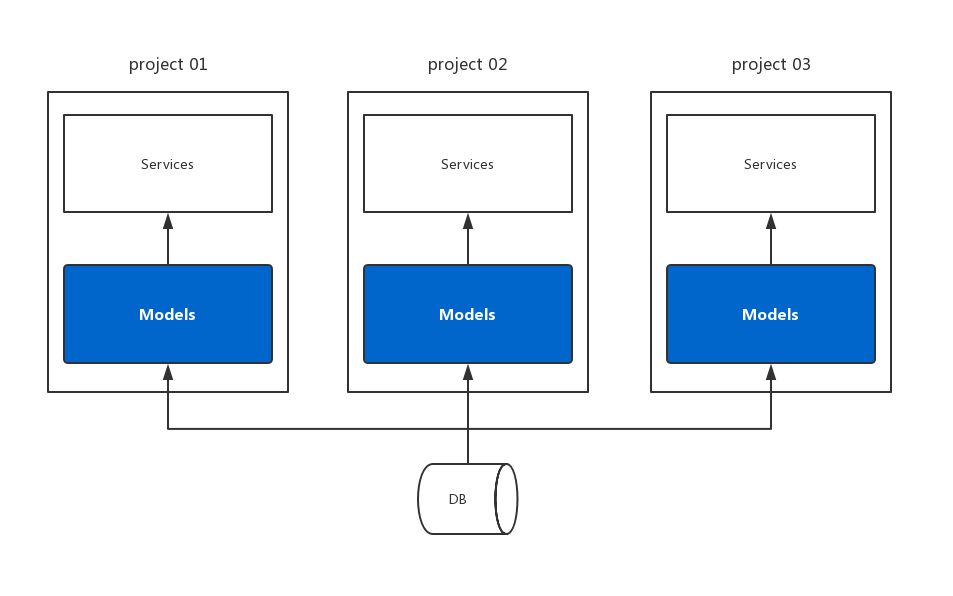
- 此时,项目组之间就会出现这样的问题:一旦数据模型变更,所需变更改动的地方就是所涉及的项目总数。
插件设计理念
- 本插件是 ~~为了防止世界被破坏~~,为了减少功能变动或设计变动所导致的
Model部分多次改动(人工改动必然会增加错误率),为了降低项目结构的耦合。
插件运行流程
将数据模型文件部分做为独立项目运行,其他关联项目在启动时,异步访问数据模型项目,根据解析结果生成虚拟sequelize models。
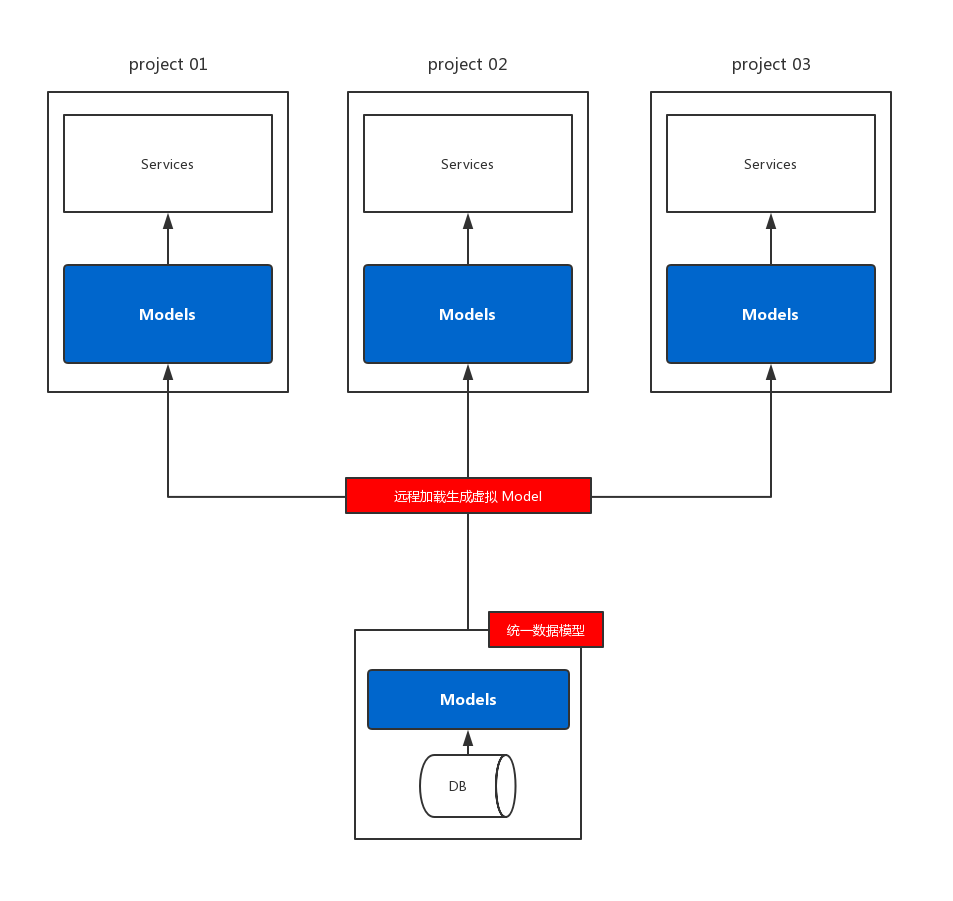
插件分为两部分:
egg-models-import和egg-models-export。顾名思义,前者是导入行为,关联项目所需使用的,用于异步加载并生成数据模型缓存;后者是导出行为,数据核心项目所需的,用于对外提供远程接口,根据真实的数据模型,为分支关联项目提供模型解析方案。
egg-models-import 配置
请到 egg-models-import 查看详细配置项说明。
egg-models-export 配置
依赖的插件
- ~~egg-sequelize:
^4.3.1(1.0.5前)~~ - egg-sequelize:
^5.1.0(1.0.6+) - mysql2:
^1.6.5 - moment:
^2.24.0
1. 安装
$ npm i egg-models-export --save2. 开启插件
在
egg-models-export中,egg-sequelize是必要配置的插件。原因在于egg-models-export需要在启动时通过sequelize加载数据模型。
// config/plugin.js
module.exports = {
sequelize: {
enable: true,
package: 'egg-sequelize',
},
modelsExport: {
enable: true,
package: 'egg-models-export',
}
};3. 配置插件
// config/config.{dev}.js
'use strict';
module.exports = appInfo => {
/**
* built-in config
* @type {Egg.EggAppConfig}
**/
const config = {};
// use for cookie sign key, should change to your own and keep security
config.keys = appInfo.name + '_xxxxxxxx';
// sequelize 配置即可
config.sequelize = {
// ...
};
return {
...config,
};
};4. 模型设置
- 在
egg-models-export项目中需要编辑model文件,编辑模型属性及关联关系等,启动项目即可。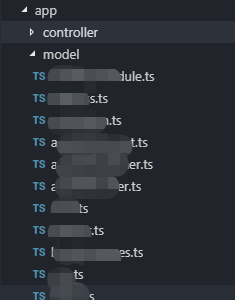
简单模式下(不需要使用鉴权及多数据库模式),配置到这一步即可。此时通过
npm start启动数据核心项目,安装了egg-models-import插件的项目便可以接入缓存数据了。
5. 鉴权
1.0.5 新增: 数据模型核心可以配置每个分支项目的访问权限,及可访问的
table组。
// config/config.{dev}.js
'use strict';
module.exports = appInfo => {
/**
* built-in config
* @type {Egg.EggAppConfig}
**/
const config = {};
config.modelsExport = {
// auth 默认为空,如果配置,则表明核心对外部访问需要鉴权
auth: [{
key: 'project-1',
secret: '7825dfc0-4c82-11e9-81c9-73dbcff02a31',
ignore: [],
contains: [ 'address', 'client' ],
}, {
key: 'project-2',
secret: '68b5dfc0-4c82-11e9-81c9-73dbcff02bd1',
ignore: [ 'client', 'province' ],
},],
};
return {
...config,
};
};属性 | 类型 | 描述
--- | --- | --------
auth | Array | [ 非必要,一旦配置则启用鉴权 ] 权限数组,每一个元素都表示一个访问角色
role | Object | 权限数组中的元素 (由项目设计者约定分配)
key | String | 访问角色的 KEY , 多个 KEY 不可重复。
secret | String | 访问角色的 SECRET
ignore | Array | [ 非必要 ] 忽略的数据表,配置的所有表将不会被访问者获取
contains | Array | [ 非必要 ] 仅能访问的数据表,优先级大于 ignore ,若与 ignore 同时存在则仅仅 contains 有效。
6. 多库支持
1.0.6版本:在特殊情况下,数据核心的管理者可能希望一个核心管理多个数据库,并为其他分支项目分配不同的数据模型支持。
6.1 egg-sequelize 配置
通过配置 datasources 数组,可以为数据核心挂载多个数据库模型。
// config/config.default.js
config.sequelize = {
datasources: [
{
delegate: 'model_01', // load all models to app.model and ctx.model
baseDir: 'model_01', // load models from `app/model/*.js`
database: 'biz',
// other sequelize configurations
},
{
delegate: 'model_02', // load all models to app.adminModel and ctx.adminModel
baseDir: 'model_02', // load models from `app/admin_model/*.js`
database: 'admin',
// other sequelize configurations
},
],
};6.2 modelsExport 配置
多数据库状态下,必须配置 auth 鉴权,并且每一个角色都必须配置 delegate ,与 sequelize 中的 delegate 需一以应对。
// config/config.default.js
config.modelsExport = {
// auth 默认为空,如果配置,则表明核心对外部访问需要鉴权
auth: [{
key: 'project-1',
secret: '7825dfc0-4c82-11e9-81c9-73dbcff02a31',
delegate: 'model_01', // 多库必须配置 delegate
ignore: [],
contains: [ 'address', 'client' ],
}, {
key: 'project-2',
secret: '68b5dfc0-4c82-11e9-81c9-73dbcff02bd1',
delegate: 'model_02', // 多库必须配置 delegate
ignore: [ 'client', 'province' ],
},],
};6.3 多库数据模型
路径需与配置一一应对,将数据模型文件放置于相应的模型路径之中,即可分别动态加载。
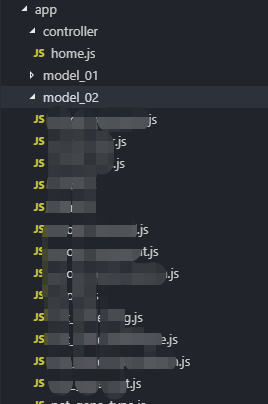
8 热更新 (1.0.8新增)
通常,在 测试阶段 或者 极端的生产环境 中,我们可能需要:
- 更新 数据核心 的数据模型;
- 在适当的时候,重启 业务分支 或者,业务分支不做任何动作,便可以更新分支缓存的数据模型。
8.1 在 分支 启动时,首次获取 数据核心 所描述的虚拟数据版本。
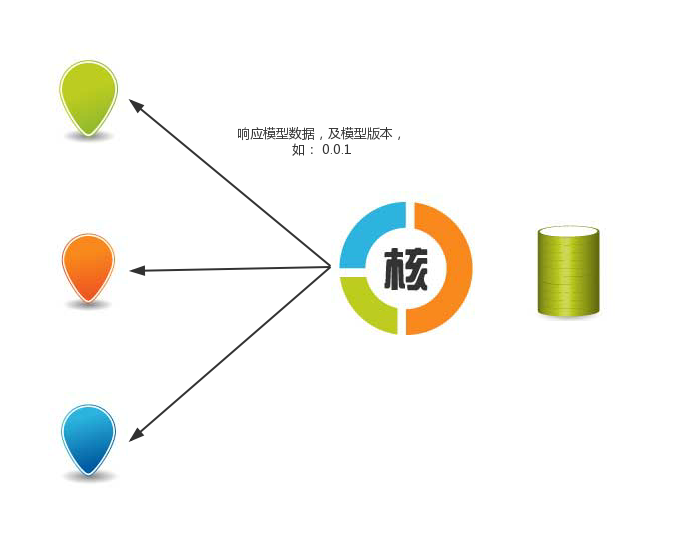
- 若无需鉴权, 则直接配置于 modelsExport
// 数据核心 (安装了egg-models-export,并装载实体数据文件的应用)
// config/config.{dev}.js
config.modelsExport = {
version: {
code: '1.0.0',
cron: '0 0 */3 * * *',
},
}- 若多角色核心,则将版本配置于
auth组的角色对象中。
// 数据核心 (安装了egg-models-export,并装载实体数据文件的应用)
// config/config.{dev}.js
config.modelsExport = {
auth: [
{
version: {
code: '2.0.0',
interval: 60000,
},
key: 'haiou',
delegate: 'model_s',
secret: '7825dfc0-4c82-11e9-81c9-73dbcff02a31',
}, {
version: {
code: '3.0.5',
interval: '3m',
},
key: 'xiaofei',
delegate: 'model',
secret: '68b5dfc0-4c82-11e9-81c9-73dbcff02bd1',
},
],
}
version对象有三个属性:
- code
[String]版本号- interval
[String | Number]字符串或数字类型的执行时机,字符串类型时仅支持后缀为 时、分、秒 的关键字:h、m、s;数字类型时表示一个毫秒数。interval与cron只能配置一个,若同时存在则interval优先级较大。- cron
[String]表示执行时机的 cron 表达式。注意:
interval与cron所表示的是,分支项目获取新版本时,在多久之后执行 虚拟模型 替换。将在替换前执行一个setTimeout计时器。
8.2 如果项目需要热更,则应该配置 检查核心版本 的插件定时器。
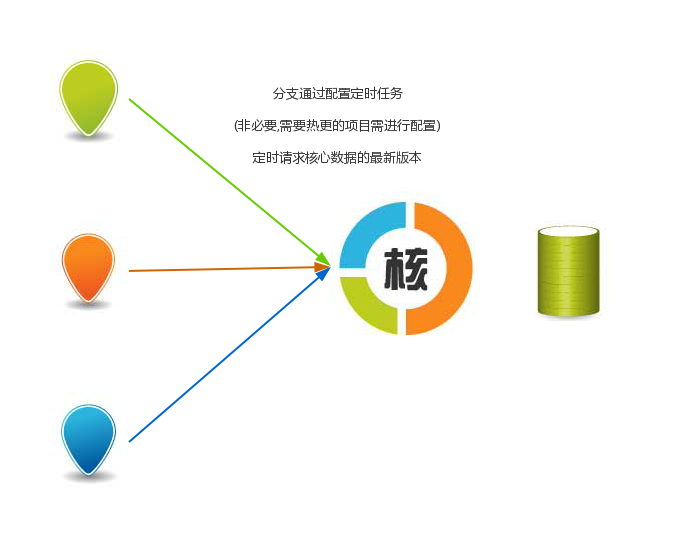
// 分支项目 (安装了 egg-models-import 的应用)
// config/config.{dev}.js
config.modelsImport = {
modelExport: {
// 其他配置...
// 热更检查时机
checkVersion: {
// disable: false,
// interval: 10000,
cron: '*/10 * * * * *',
},
},
sequelize: {
// ...
}
}若配置有
checkVersion对象, 则可以开启一个用于检查 数据核心 所描述的数据版本的 定时任务。disable表示定时任务的禁用状态。interval或cron表示检查版本定时任务的执行时机。
8.3 热更过程
- 数据核心 在 分支 获取虚拟模型后,可随时进行关闭,并调整新的模型(如更新现有模型的属性、关系,或增加新的模型文件)。
- 在 更新模型 行为结束后,需 将模型版本号
version.code配置为新的标识,分支 在检查版本时若发现 不一样的版本号 ,则对当前进程中的虚拟数据进行热更新。 - 为避免影响线上业务,可在 数据核心 的
version中设置更新时机,规避业务高峰。
历史版本
1.0.82:
- 新增 生成模型时的模型名格式多样化表现,添加了下划线命名转换“大/小驼峰命名”的配置;详情见 egg-models-import 中的 ** 4.模型访问 **
1.0.81:
- 修复了简洁模式下的几个严重bug;
1.0.8:
- 新增 数据热更新模式;
- 微调 现有执行过程;
1.0.6:
- 新增 对数据核心多库的支持;
- 变更
egg-sequelize的支持版本从4.3.1到5.1.0;
1.0.5:
- 新增 鉴权功能,通过配置鉴权数组,可限制访问者无法访问
ignore(忽略列表),或限制访问者只能访问contains(仅可访问列表);- 修复 其他问题;
提问交流
请到 egg issues 异步交流。





